Rolling Process for Titanium
Overview of the Rolling Process
Rolling is a forming method in which titanium is passed between two or more rotating rolls under high pressure to elongate the material.
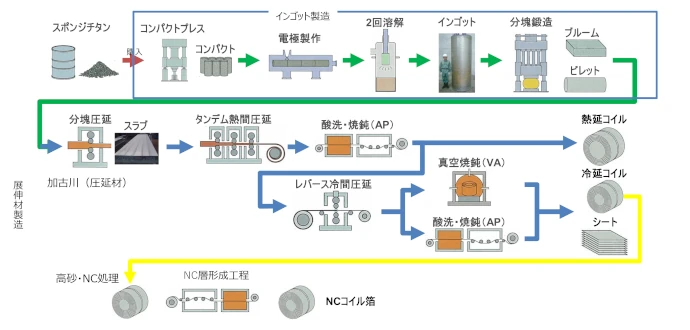
Typical Manufacturing Process
Melting and Bloom/Billet Casting of Titanium

- (1) Compacting of titanium sponge
Titanium sponge, the raw material, is compressed using a press.
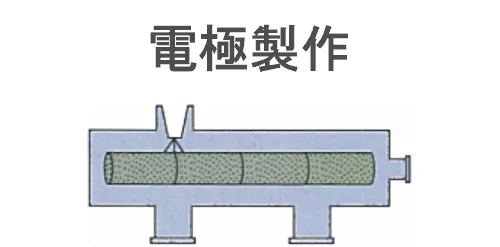
- (2) Electrode formation
The compacted sponge is welded to form an electrode.
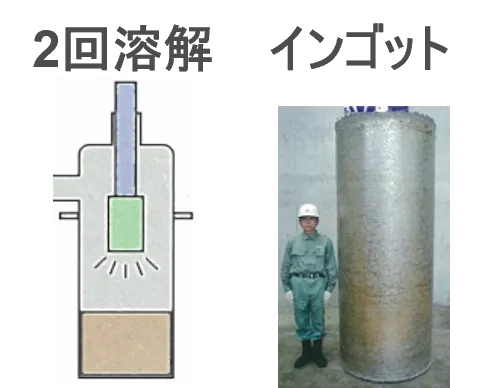
- (3) Melting and ingot casting
The electrode is cast into an ingot using an electrode arc melting process.
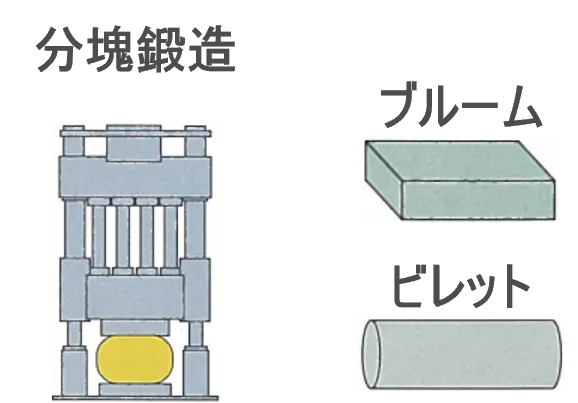
- (4) Bloom/billet forging
The cast ingot is pressed into bloom or billet form using a press.
Rolling, Annealing, and Processing (Hot-Rolled Coil)
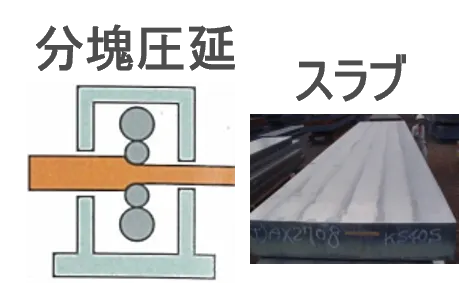
- (5) Rolling
The titanium is hot-rolled above its recrystallization temperature to achieve the required sheet thickness.
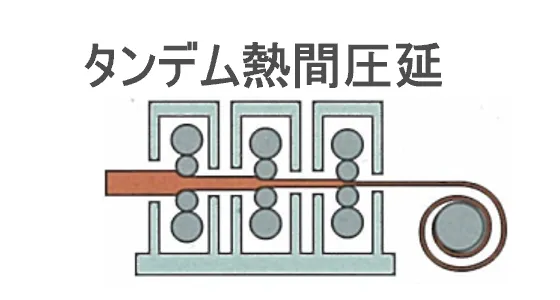
- (6) Tandem hot rolling
The titanium is rolled in stages at high temperature above its recrystallization temperature to achieve the required sheet thickness.
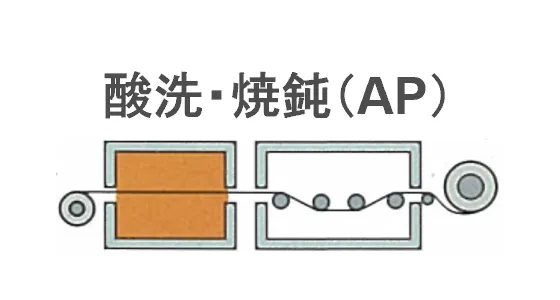
- (7) Pickling and annealing (AP)
The material is annealed to impart the required mechanical properties, while removing oils and other contaminants.
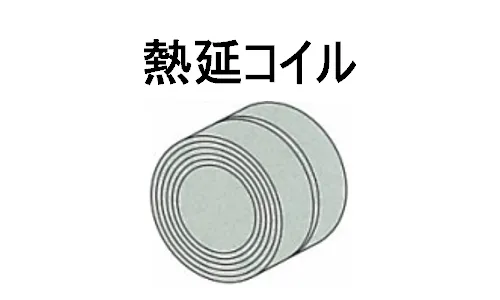
- (8) Completion
The material is processed to its final shape and shipped.
Rolling, Annealing, and Processing (Cold-Rolled Coil)

- (5) Rolling
The titanium is hot-rolled above its recrystallization temperature to achieve the required sheet thickness.

- (6) Tandem hot rolling
The titanium is rolled in stages at high temperature above its recrystallization temperature to achieve the required sheet thickness.

- (7) Pickling and annealing (AP)
The material is annealed to impart the required mechanical properties, while removing oils and other contaminants.
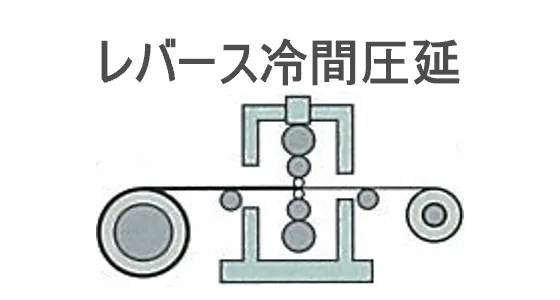
- (8) Reversible cold rolling
Rolling is performed at room temperature.
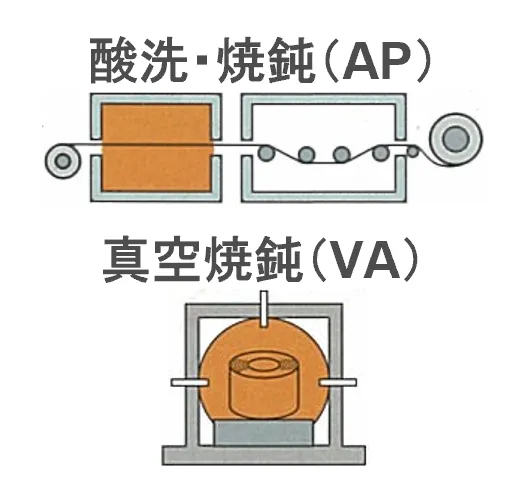
- (9) Pickling and annealing (AP) / Vacuum annealing (VA)
Continuous pickling and annealing are carried out.
Heat treatment is performed in a vacuum.
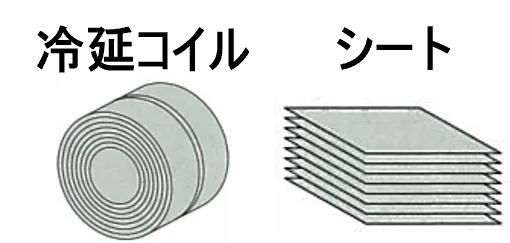
- (10) Completion
Produces coils that are thinner and dimensionally more precise than those made by hot rolling.
The cold-rolled coil is then cut into sheet form.
Contact Us
You can reach us by clicking the inquiry button.